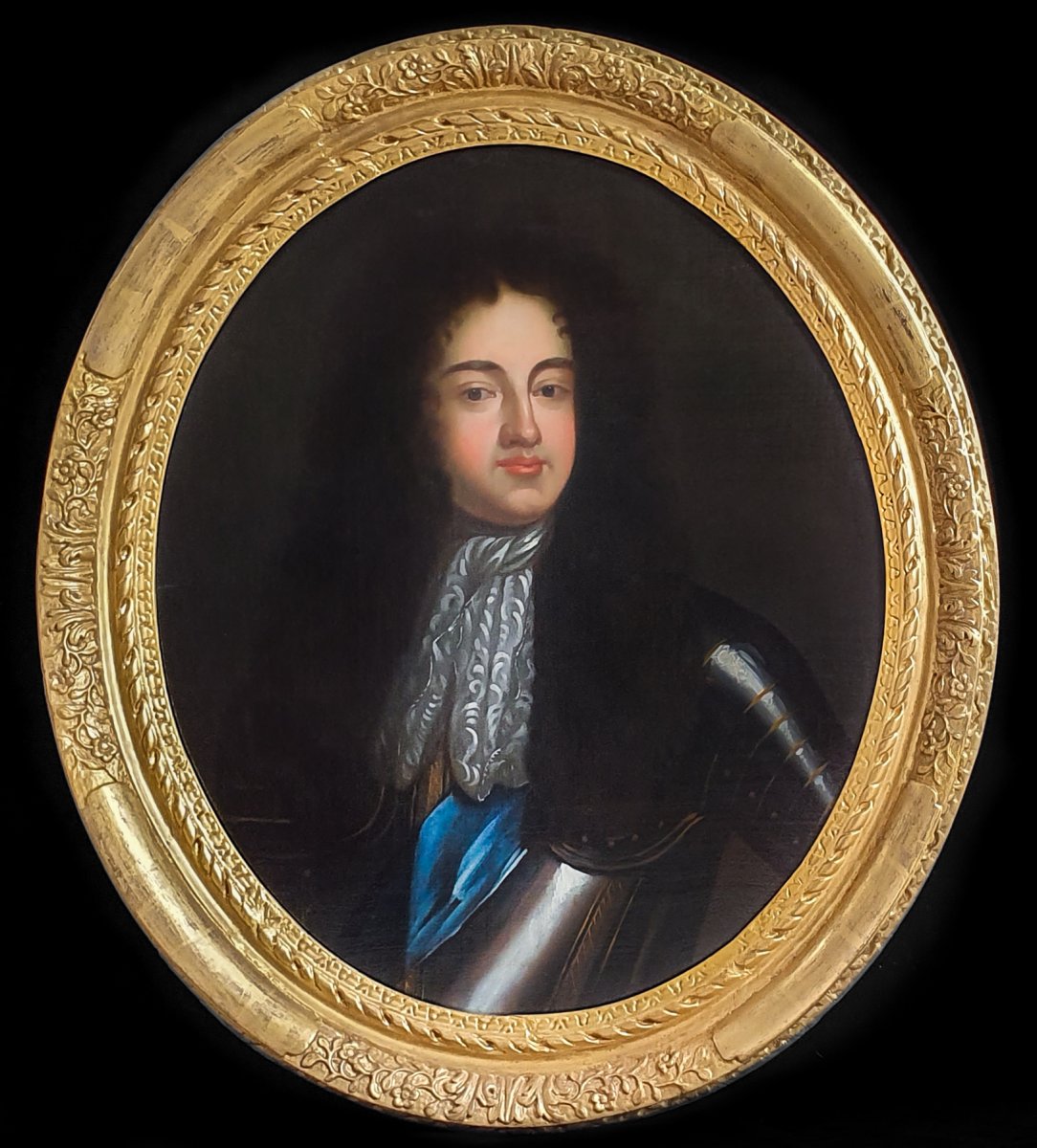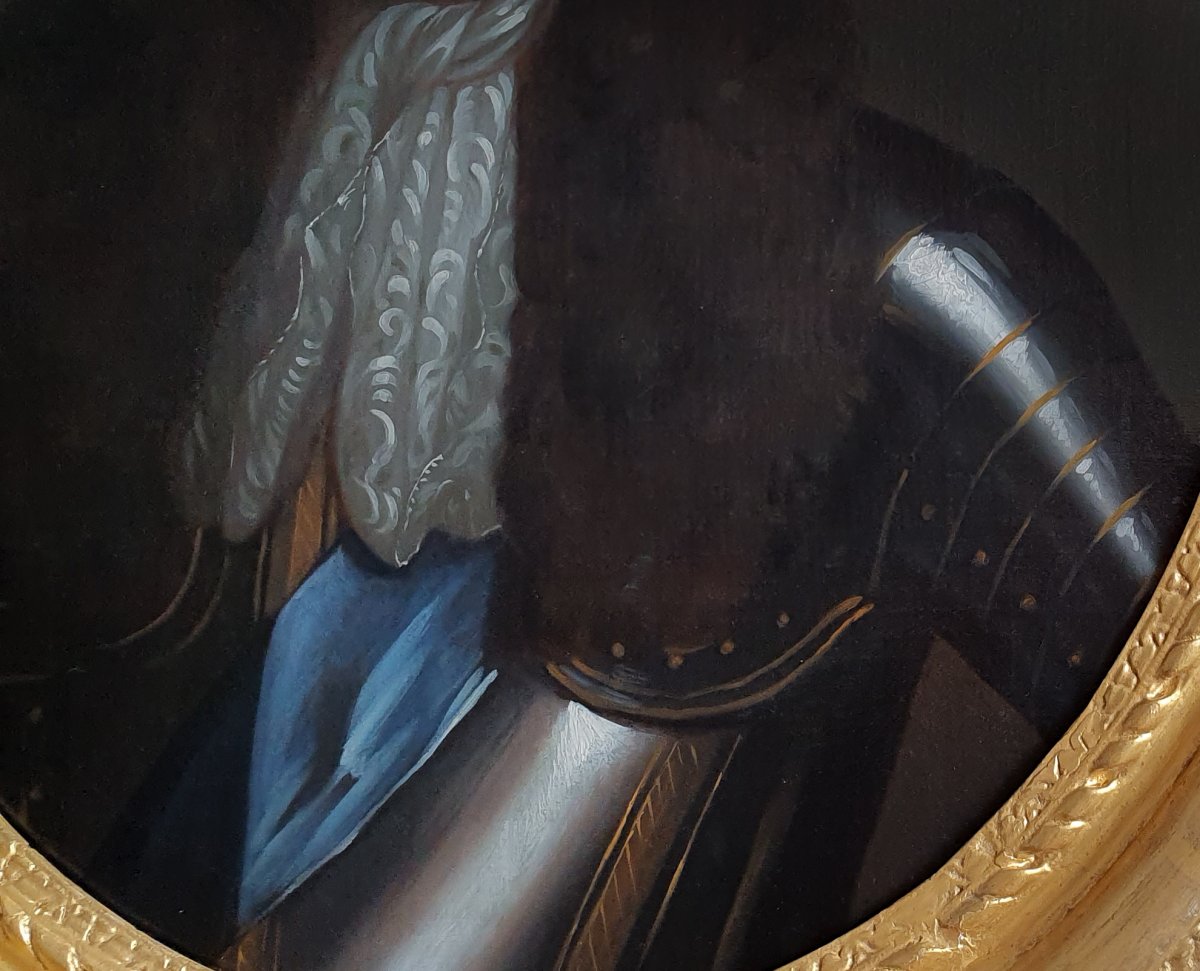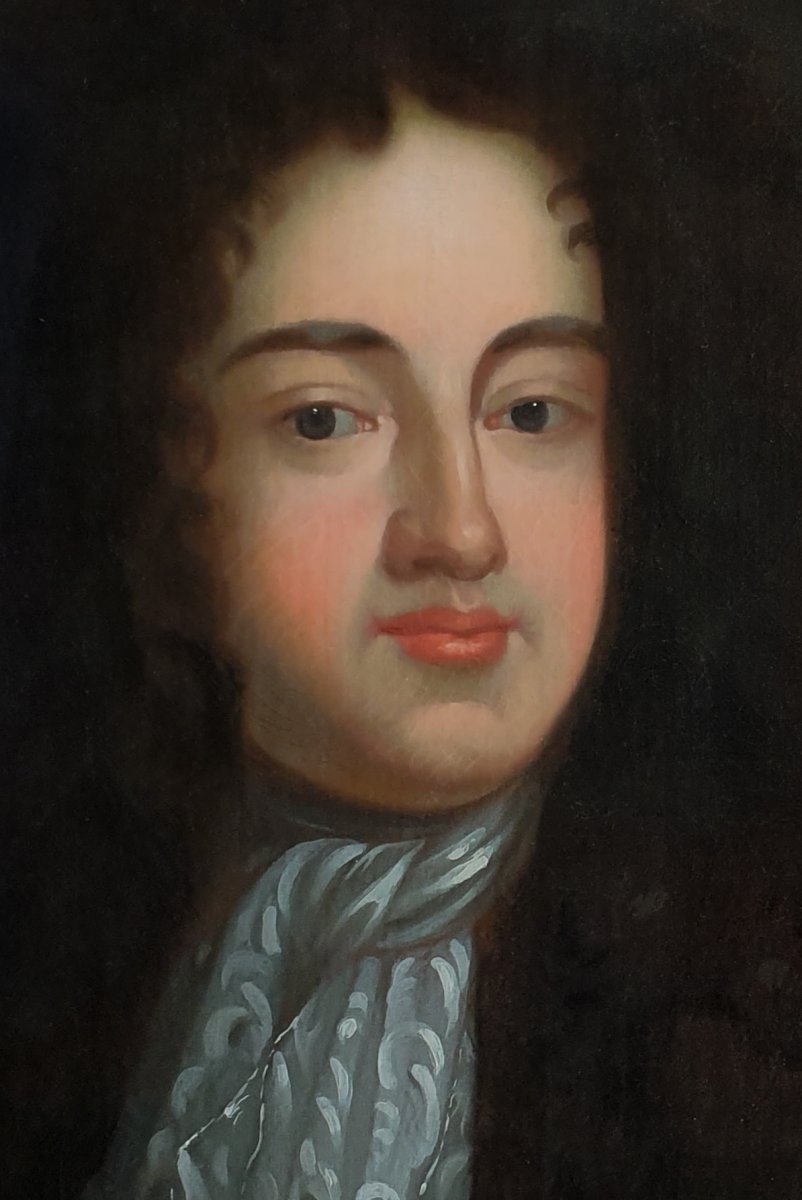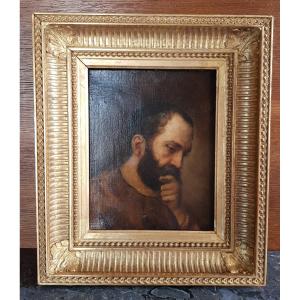"18th Century Portrait Of James Scott, Duke Of Monmouth & Buccleuch (1649-1685)"
Painted in the eighteenth century, this portrait depicts James Scott, the Duke of Monmouth wearing an armor and the blue belt of the order of the garter. Born to Charles II, King of England, Ireland and Scotland, and his mistress, Lucy Walter, Scott was transported from the Netherlands to Paris, before being brought to England at the age of 13 years, where he was created Duke of Monmouth, Earl of Doncaster and Baron Scott of Tynedale, as well as a knight of the garter. Later in the year, he was married to Anne Scott, 4th Countess of Buccleuch, taking his last name and taking the title of Duke of Buccleuch. He then had a successful military career, winning key battles. His growing popularity, as well as his belief that his mother and the king had secretly married, thus legitimizing his birth, gave Scott the impression that he should be declared the rightful heir to the throne. On the death of Charles II, his brother, James II, seized the crown. Several members of Parliament refused him approval, considering that James II was Catholic. Instead, they proposed that Scott, a Protestant, be put on the throne. This led to the Monmouth Rebellion, in which Scott attempted to overthrow James II. On June 11, 1685, the exiled Duke of Monmouth, illegitimate son of Charles II, landed at Lyme Regis, Dorset, with a small force to overthrow the new Catholic King, James II. Monmouth is popular with a large part of the English people and there are many who support his rebellion in order to recover his religious and political rights, which have been gradually eroded since the Restoration of Charles II. It must have been a concerted effort between the Scots and the English, because the Duke of Argyll had left Holland in May to initiate a rebellion in Scotland. But planning was insufficient, their preparations for invasion had been discovered by the crown, and Monmouth's forces were few and poorly equipped. Argyll's Scottish rebellion was stifled almost before it could begin, and in 36 hours the news of the Monmouth landing had reached the King and his military commanders in London. After only six weeks, the rebellion was repressed and Scott was found guilty of treason and sentenced to death by beheading at the age of 36. Charles II granted some of his illegitimate sons an almost quasi-royal status. One method of "legitimizing" illegitimate sons was to complete their peers with the noblest order of the garter, the oldest order of chivalry in the world, created by Edward III in about 1348. The garter appointments are a personal gift from the ruler and are considered the most prestigious of the chivalry orders. Our portrait could be inspired by a very similar portrait of the Duke of the National Portrait Gallery in London, allegedly painted by William Wissing around 1683, when maneuvers were undertaken in the hope of legitimizing Monmouth as a Protestant successor. of Charles II.
Presented in an antique frame finely carved. Willem Wissing was a Dutch artist who came to London in 1676. He studied with Sir Peter Lely and actually took over his business when Lely died. He excelled in portraiture, having had only one true rival in England, Sir Godfrey Kneller, and had been commissioned by the King to paint Mary II.
Provenance: Uk Private Collection
Measurements: Height 95cm, width 82.5cm framed (Height 37.5 ", width 32.5" framed)























 Le Magazine de PROANTIC
Le Magazine de PROANTIC TRÉSORS Magazine
TRÉSORS Magazine Rivista Artiquariato
Rivista Artiquariato
